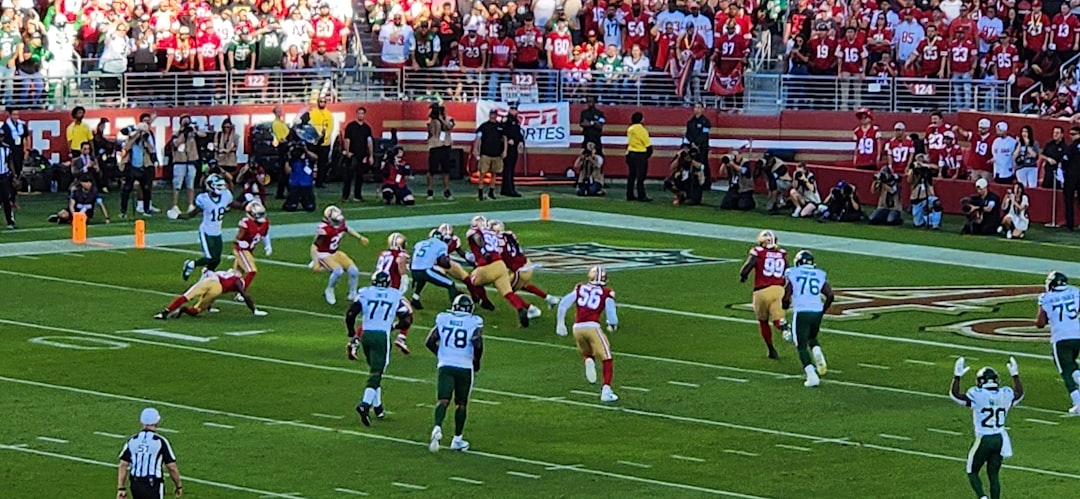When most people think of professional athletes and their salaries, sports like football, basketball, and baseball quickly come to mind. However, one of the fastest-growing sports in North America—lacrosse—is carving out its own niche in the pro sports arena. If you’ve ever wondered how much professional lacrosse players make, you’re not alone. With leagues expanding and the sport gaining traction, the financial side of professional lacrosse is becoming increasingly intriguing.
TLDR: Professional Lacrosse Salaries in a Nutshell
Professional lacrosse players typically earn modest salaries compared to athletes in major U.S. sports. In the Premier Lacrosse League (PLL), top players can make up to $35,000 to $60,000 per season from base salaries alone, with additional income from endorsements and other opportunities. National Lacrosse League (NLL) players usually earn between $10,000 and $25,000 per season. Most players supplement their income with coaching, clinics, or other careers.
Overview of Professional Lacrosse Leagues
The financial compensation for lacrosse players depends heavily on which professional league they play in. There are two main professional lacrosse leagues in North America:
- Premier Lacrosse League (PLL) – A field lacrosse league founded in 2018 by Paul and Mike Rabil. It’s known for its unique touring model and extensive media coverage.
- National Lacrosse League (NLL) – An indoor lacrosse (box lacrosse) league that has been around since the 1980s and has teams across the U.S. and Canada.
Premier Lacrosse League (PLL) Salaries
Founded with player compensation as a key priority, the PLL offers relatively higher salaries than past professional lacrosse leagues.
Base Salary Structure
As of 2023, PLL players earn between $25,000 and $35,000 per season. Salaries may vary depending on experience, position, and performance. Some elite players can earn even more, up to $60,000, especially if they’ve been in the league since its inaugural season or have standout accolades.
The league also offers health benefits, equity in the league, and travel expenses, which aren’t typical in most lower-tier sports leagues.
Bonuses and Incentives
Players in the PLL can also make additional money from:
- Performance bonuses – Awarded for leading the league in stats or winning certain honors.
- Championship bonuses – Extra cash for teams that win or make it far in the playoffs.
- Appearance fees – For media engagements, promotional activities, or fan events.
Because the league focuses heavily on growing its visibility and promoting players as marketable athletes, these extra avenues of income can be quite valuable.
Endorsements and Media Opportunities
Top players like Paul Rabil and Matt Rambo have signed sponsorship deals with brands like Warrior, STX, and Nike. With millions of social media followers and frequent TV features, players with name recognition can earn significant endorsement deals, sometimes matching or even exceeding their base salaries.

National Lacrosse League (NLL) Salaries
The NLL, despite its longevity, provides lower base compensation to its players. Many NLL athletes play professionally only part-time and hold other jobs.
Base Salaries
According to the NLL Players’ Association, the average player salary ranges from $10,000 to $25,000 per season. Rookies typically earn toward the lower end, while some veteran players and stars might approach the high end of that range.
Per Game Pay and Contracts
Players often receive pay on a per-game basis. A typical NLL season includes about 18 regular-season games, with moderate travel costs often reimbursed by the team. Most contracts are one to two years long, and full health insurance isn’t always included.
Bonuses and Additional Compensation
The NLL also includes incentive opportunities:
- Win bonuses
- Playoff bonuses
- Player-of-the-week incentives
- Endorsement deals with local retailers or gear companies

Lifestyle and Supplementary Income
Because most lacrosse players—especially in the NLL—don’t earn enough to sustain themselves solely through playing, they often maintain other careers or take on side gigs.
Common Secondary Jobs
Lacrosse players commonly pursue:
- Coaching – Many coach high school or college teams in the offseason.
- Conducting clinics – Private instructional clinics are a popular way to supplement income.
- Marketing and Sales roles – Especially in sectors related to sports gear or education.
- Firefighting, Teaching, Real Estate – Several players work in these fields due to their flexible hours, allowing them to continue playing.
Media and Influencer Roles
With the rise of social media and podcasts, a number of high-profile lacrosse athletes have leveraged their fame to build brands. Through YouTube videos, Instagram partnerships, and podcast hosting, some players can create significant supplementary income while raising the sport’s profile.
Comparing Lacrosse Salaries to Other Pro Sports
For context, consider the following average annual salaries in other major professional sports in the United States:
- MLB: Over $4.5 million
- NFL: Roughly $2.7 million
- NBA: Approximately $8 million
- NHL: About $3 million
- PLL: Around $30,000 (not season-inclusive)
- NLL: Around $15,000
As you can see, even the top lacrosse players earn only a fraction of what average players make in these larger leagues. However, most in the lacrosse world see this as a challenge that the sport is starting to overcome.
The Future of Lacrosse Salaries
Both the PLL and NLL are actively working to increase monetary incentives for players. The growth of youth programs, expansion of professional teams, and increased media deals (such as PLL’s partnership with ESPN) are contributing to a more sustainable professional path for lacrosse players.
Additionally, with the inclusion of lacrosse in international events such as The World Games and a possible future Olympic inclusion, more eyes on the sport could lead to better funding, broadcasting rights, and improved player pay.
What Could Boost Salaries?
- Corporate Sponsorships – Increased brand involvement in the sport could result in higher player incomes.
- Television Deals – Larger media contracts mean more revenue for leagues.
- Expanded League Seasons – Longer seasons could justify higher wages.
- Union Strength – Better collective bargaining could help ensure fair pay and working conditions.
Conclusion
Even though professional lacrosse salaries aren’t on par with the big-name sports yet, they offer a respectable income within the growing landscape of niche athletics. Players often demonstrate an extraordinary passion for the game, balancing demanding training schedules with second jobs and side hustles. With its increasing popularity and exposure, lacrosse is slowly becoming a more financially viable option for professional athletes.
Whether you’re a player aiming for the pros or a fan curious about the sport’s evolution, understanding the financial realities behind lacrosse adds a deeper perspective to your appreciation of the game. And with dedication from both leagues and players, the future looks promising.
